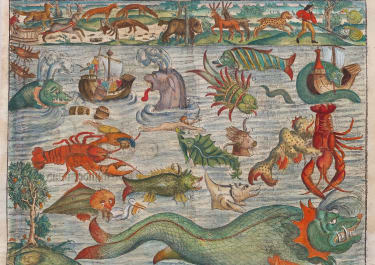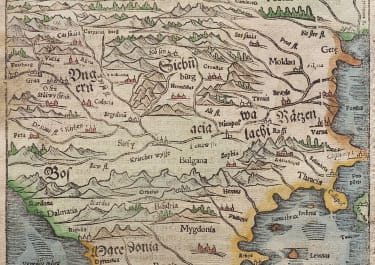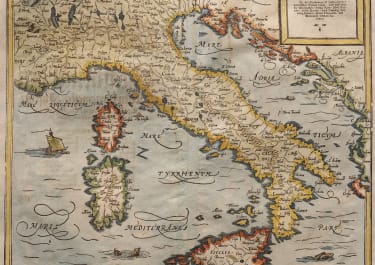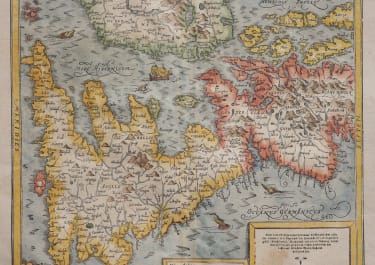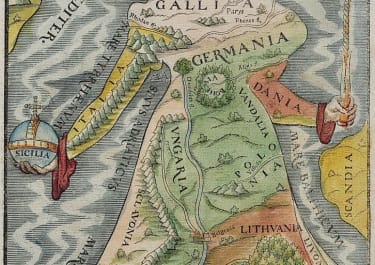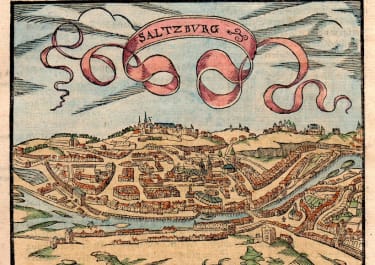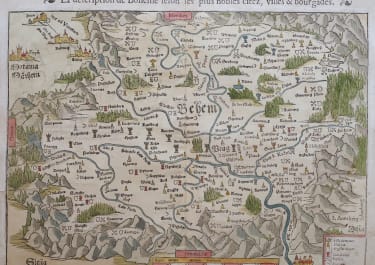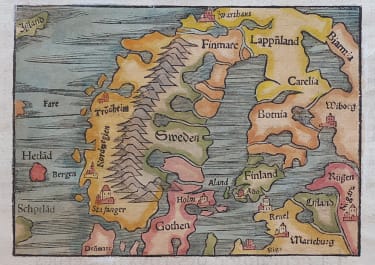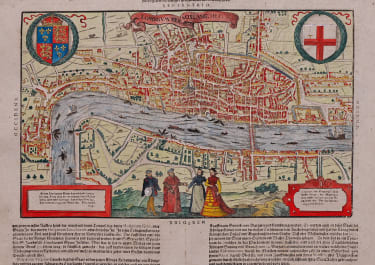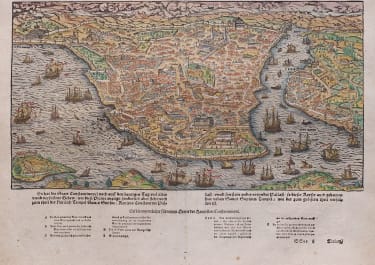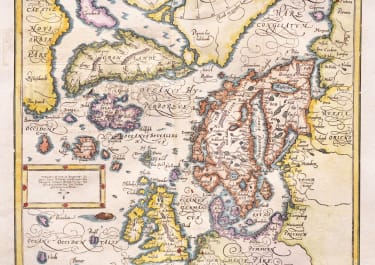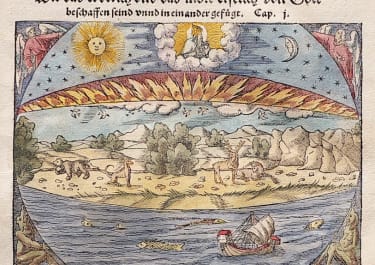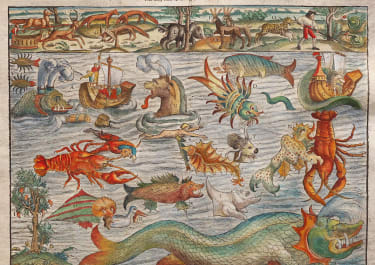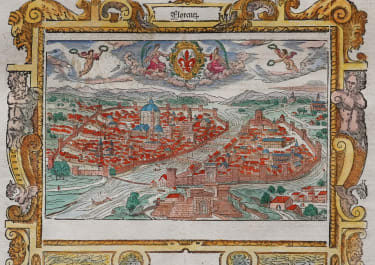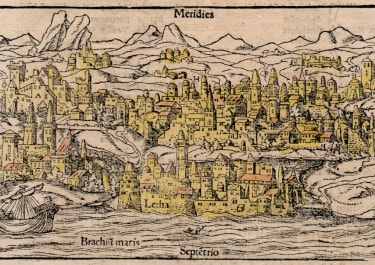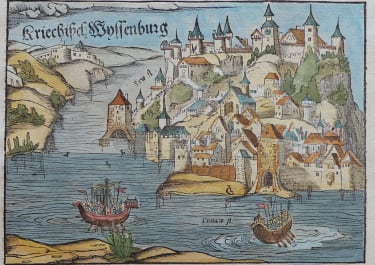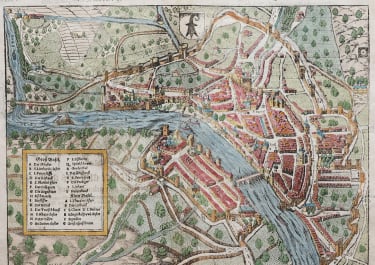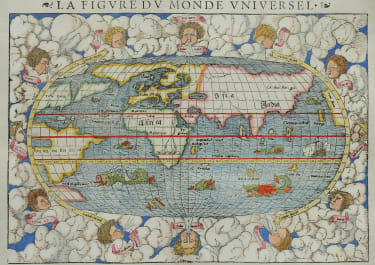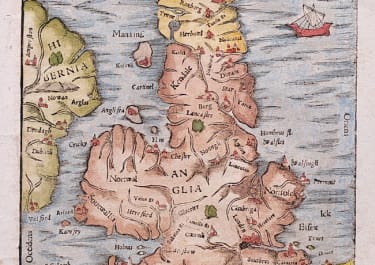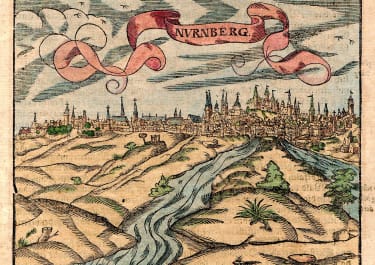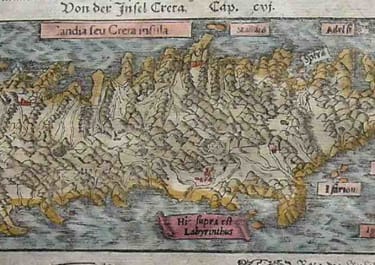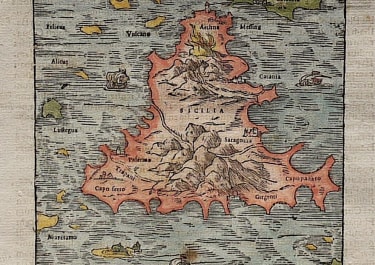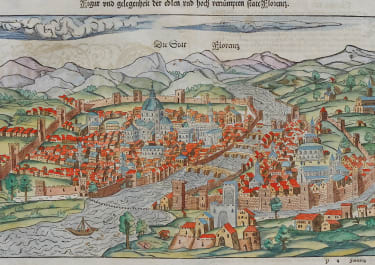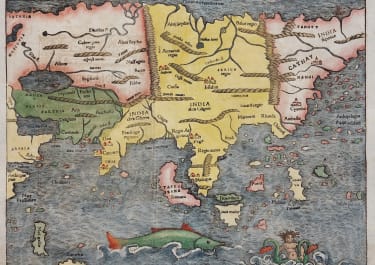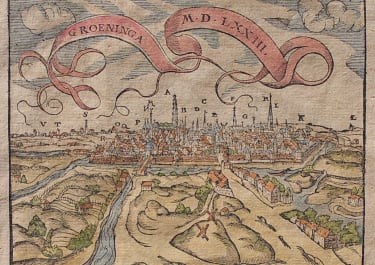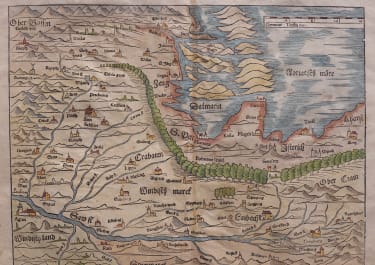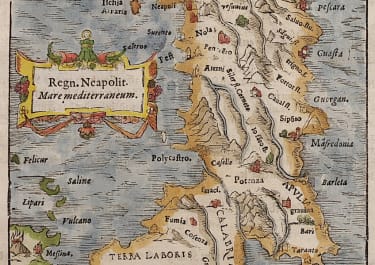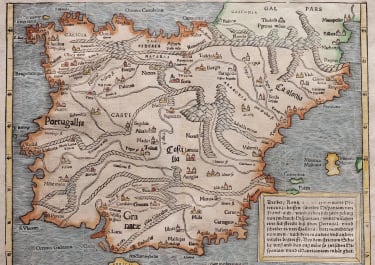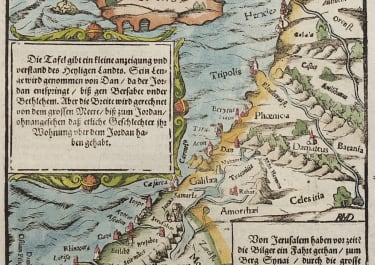WORLD DIE ERST GENERAL TAFEL
Sold
A visually stunning 'modern' world map that appeared in issues of Munster’s Cosmographica from 1578.
This oval woodcut world map appeared in the later editions of Munster's Cosmographia that were published by Sebastian Petri, the son of Munster's step-son, Henricus Petri. The map of the "modern" world is based on Ortelius' map of 1570. It is surrounded by a floral and vine leaf pattern and two strapwork cartouches containing German text. The gothic German title is in the upper margin. Interesting cartographic features of the map include a huge southern continent and a Northern Passage (both Northwest and Northeast) to Asia. The map includes several tiny ships and sea monsters. German text and illustration on verso.
Excellent hand colour.
Exceptionally good condition
References: Shirley #163; Shirley (BL Atlases) T.MUN-1-l #1.
code : M4874
Cartographer : Sebastian Munster
Date : 1580 Basel
Size : 31*37 cms image: sheet inc title 37*44 cms
availability : Sold
Price : Sold
Originally a scholar studying Hebrew, Greek and mathematics, Sebastian Munster (1489-1552) eventually specialised in mathematical geography and cartography. It was this double ability - as a classicist and mathematician - that was to prove invaluable when Munster set himself to preparing new editions of Solinus’ “Memorabilia” and Mela’s “De Situ Orbis”, two classical descriptive geographies containing maps, and his own two greatest works, the “Geographia” and “Cosmographia”. These reflect the widespread interest in classical texts, which were being rediscovered in the fifteenth century, and being disseminated in the later fifteenth and sixteenth century, through the new medium of printing.
The “Geographia” was a translation of Ptolemy’s landmark geographical text, compiled in about 150 AD., illustrated with maps based on Ptolemy’s calculations, but also, in recognition of the increased geographical awareness, contains a section of modern maps. In the first edition of the “Geographia”, Munster included 27 ancient Ptolemaic maps and 21 modern maps, printed from woodblocks. Subsequent editions of the “Cosmographia” were to contain a vast number of maps and plans.
One consequence of Munster’s work was the impetus it gave to regional mapping of Germany, but Munster was also the first cartographer to produce a set of maps of the four continents on separate maps. Most importantly, through his books (the “Geographia” and “Cosmographia” alone ran to over forty editions in six languages), Munster was responsible for diffusing the most up-to-date geographical information throughout Europe.






